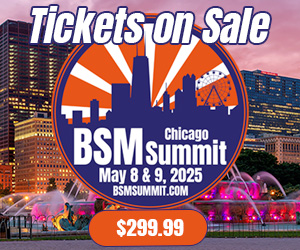You are sitting in a dark room alone, with the board operator in the next room. It’s just you, your microphone, and your thoughts. Your radio audience is a transient group of busy people who are stopping in and out of your broadcast.
I often have had conversations with hosts who mentally tell themselves that their listeners are there for every moment of the show. It’s sadly not true. There are some people listening for the entire show. They are either casually listening at work, talk radio addicts, or shut-ins. By the way, I love all three of those types of listeners, but they are not your average listeners. So, you need to know your place in the lives of real people. These people are transporting kids. Running errands on the way to work or on the way home. These commutes also can start or end at any moment of your broadcast. You have one job: capture ears for as long as possible.
Providing a listener-focused experience. Imagine being at a diner and a person coming up to greet you and a friend at a table. Do you leave the new person out of the conversation? No, you introduce your friend and fill the person in on the conversation that you are having. It is polite. Well, PPM says that people are likely to start listening to your show every minute that you are on the air. I am guilty of this and nearly every host is as well.
You are interviewing a guest, and you don’t do a reintroduction. “This is Congressman Jones who is supporting Jim Jordon on the Bob Roberts how on WXYX.” A quick line and that gets the constantly new listeners up to speed on your discussion.
When do you leave in the morning for work? I try to get out at 4:45, but sometimes I get out at 4:53. I am listening to my favorite station in the middle of a conversation. My guess is that your routine is very similar. I bet your listeners have exactly the same scenario every day. The quicker your listeners are in the loop, they are likely to stay longer. It’s all about getting the people who tune in to stay long. Music stations have it easier. If a person turns on the country station and if the individual hates the song, that country music fan might wait for the next song. If your fan is not in the loop, they are gone. If it is less than 5 minutes, you get no credit.
If you are in a diary market, it is preached to say the station’s name as much as possible. 40-70 times an hour is often mentioned. In PPM Markets, I have heard stations rarely state their name. Hey PPM people: What are you drinking right now? A Powerade? Look at how many times on your beverage the name of it is mentioned. I added up five mentions on the Powerade. I am currently sucking down Lipton Diet Citrus Green Tea. Lipton Tea is mentioned three times. Why so many? They want to create a brand identity in your skull. If your beverage mentions its brand name three to five times on a bottle, how many times does it take for an audio brand to hit their brains?
It is said that a commercial on your station takes a minimum of three times to create familiarity with the listener. Radio stations generally do not have huge advertising budgets these days. But you have an awesome signal to sell you to your listeners.
I’ll give you another analogy, The Institute for Family Studies says that you should date your spouse. Why? You are married or committed to each other. The data says that dating your spouse strengthens your relationship. Your brand needs to continue to romance your most dedicated fans. It’s all about reminding the audience of your role in their lives. It builds connectivity.
By the way, Nielsen’s research says that most people will mention your station’s signal, then call letters before mentioning your hosts. Not that your host shouldn’t mention their name, but signal and call letters mean more.
Have you ever been to a party where you knew only the host? There are 15 people who are strangers to you alone. Depending on the situation, it is easy to be a wallflower. The people are discussing their shared history, experiences, and families. You know nothing about them, and it is easy to withdraw from the situation.
Well, your radio station is like a party. People feel good that they were invited but want to be included. Include your listeners. Make it as easy to be a part of the discussion as quickly as possible. Since your audience is constantly changing, this should be a never-ending part of the show.
If this seems repetitive, ask your PD for the Time Spent Listening for your show. Let’s say that it is two hours a week. That means that the average listener is there 24 minutes a day. Now, this is why resetting is important. If you can get 30 minutes a day, your ratings will increase nicely.
Something for you to chew on: spend time thinking about how you can get five more minutes a day from every listener. Resets are just one factor.

Peter Thiele is a weekly news/talk radio columnist for Barrett Media, and an experienced news/talk radio programmer. He recently served as program director for WHO/KXNO in Des Moines, IA. Prior to that role he held programming positions in New York City, San Francisco, Little Rock, Greenville, Hunstville, and Joplin. Peter has also worked as a host, account executive and producer in Minneapolis, and San Antonio. He can be found on Twitter at @PeterThiele.





